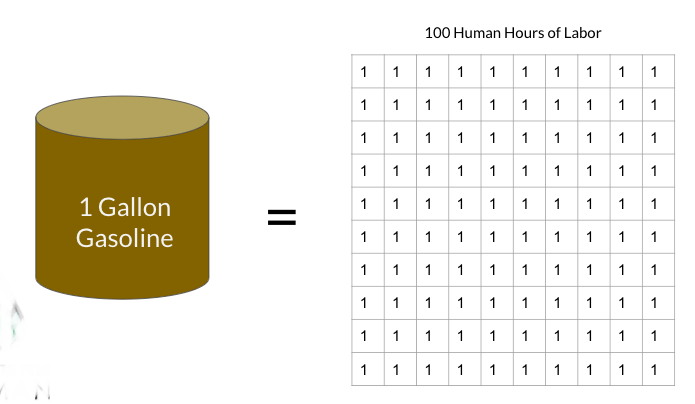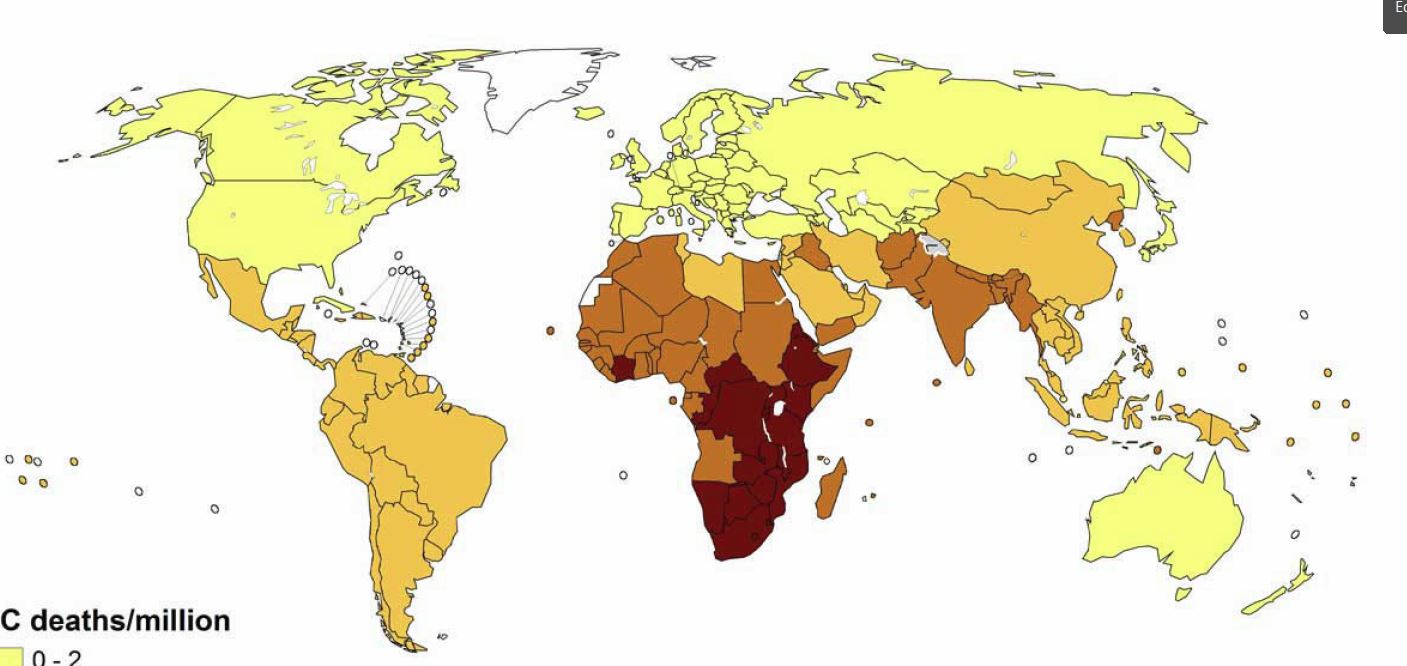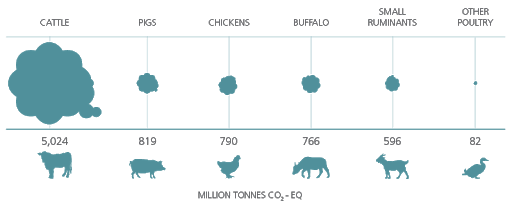The Future of Food
by Dr. Amanda McKinney, M.D.
|
Dr. Amanda McKinney, M.D., Associate Dean of Health Sciences and Executive Director of the Institute for Human and Planetary Health at Doane University, delivered a keynote address for the 2020 Nebraskans for Peace Annual Peace Conference, Saturday, September 26. Printed below is the full text of her timely speech on “The Future of Food”.
Humans have occupied the planet for around 6 million years with modern homo sapiens coming on the scene approximately 300,000 years ago. As early as 13,000 years ago, homo sapiens were the only humans remaining on Earth and approximately 1,000 years later, we fundamentally changed the way we lived and fed ourselves and began, in earnest, changing the planet in ways that will likely be our undoing as a species. When the glaciers receded at the end of the last ice age 12,000 years ago and the big game animals migrated north, it left a dwindling food supply for our hunter-gatherer ancestors in places like the Middle East, leading to the birth of agriculture and the domestication of animals in lieu of hunting and gathering. Jared Diamond, an American historian, geographer, and author declared in his 1999 article of the same name that “agriculture was the worst mistake in the history of the human race”. Diamond argues that rather than being the capstone of humanity’s million-year-long progressive evolution and our “most decisive step toward a better life”, the adoption of agriculture “was in many ways a catastrophe from which we have never recovered.” The transition from a hunter-gatherer society to an agrarian one might seem an obvious improvement. However, the Neolithic Revolution transformed what was basically a conglomeration of small egalitarian bands of hunter-gatherers to one cursed with sexism, slavery, despotism, food insecurity, disease, overpopulation, resource depletion, pollution, and human-induced climate change. Slavery was present in every agrarian society in history. The cultivation of plants and domestication of animals required far more labor than hunting and gathering. Agriculture also brought with it hierarchies with a land-owning and non-producing elite class, and slavery was modeled after the practice of domesticating animals for both food and labor. Slavery was a matter of economics. Plantations were just large, industrialized farms and slaves were an inexpensive energy source used to power economic growth. Here in America, we fought a bloody civil war to end the practice of slavery, but as we are seeing in this country, the stain of slavery and intentional, institutionalized racism remains today. Even though slavery ended, capitalism, human greed, and large permanent settlements with small numbers of farmers relative to the population remained. So we traded the repugnance of slavery for another inexpensive energy source...fossil fuels. The use of fossil fuels to replace human labor and to create petrochemicals like fertilizers and pesticides helped to liberate many from enslavement, hard labor and death. Unfortunately, there have also been some negative consequences. The use of fossil fuels has improved life for those of us who use the most of them. Our modern, consumptive lifestyles would not be remotely possible without them. Their use over the last 200 years, however, is now resulting in global climate change and other kinds of pollution that, yet again, largely affect people of color and the poor—those that have benefited least from their use. It’s estimated that the 400-year slave trade led to 15-20 million deaths. The World Health Organization anticipates that climate change will lead to 9 million excess deaths in the next 20 years alone with the lion’s share being in Africa and Asia. Fossil fuels have allowed for the production of food on a global scale never seen before. This caloric abundance paved the way for a human population explosion. While human population growth remained stable over the first 10,000 years of human civilization, it began rising in the 1700s, accelerating to nearly exponential growth in the 1900s up through to the present day. Starting in the 1900s, society expanded total and per capita food production globally, keeping pace with demand. As population grew, so did the crops and vice versa. This, and corresponding reductions in hunger, micronutrient deficiencies, childhood mortality and increases in life expectancies globally, has been viewed as one of the greatest public health achievements in human history. However, all of this has come at significant cost to the health of the planet. The impacts of people on our planet’s natural systems cannot be underestimated. In addition to fossil fuel use, in order to feed ourselves, we have converted 40 percent of the Earth’s land surface to agriculture. To keep our crops irrigated we use nearly half the accessible freshwater on the planet. Approximately 90 percent of the world’s fisheries are in permanent decline from overfishing and exploitation. More than 60 percent of the Earth’s rivers have been dammed and roughly half of the world’s forests have been cut down, and we are crowding out most of the other remaining life on our planet. According to a comprehensive 2019 report from the “Global Assessment of the Intergovernmental Panel on Biodiversity and Ecosystem Services”, approximately one million species are facing extinction over the coming decades. And this is not just what is to come. It is happening now. Since 1970, human activity has reduced the numbers of birds, mammals, reptiles, amphibians and fish with whom we share the planet by over 50 percent. Earth can no longer absorb our wastes and we are using resources faster than they can be replenished. This is driving biophysical change at levels never before seen in human history. These biophysical changes have caused us to leave the safe operating space for at least 5 of the 9 planetary boundaries as defined by Johan Rockström from the Stockholm Resilience Centre and Will Steffen from the Australian National University. The exceeded boundaries include climate change, biodiversity, land use changes, and nitrogen and phosphorus flows. It is likely that we have also exceeded the safe operating space for novel entities, including things like endocrine-disrupting chemicals and other novel chemicals that humans have produced and let loose into the biosphere, although a specific boundary has yet to be defined. Each of these boundaries interacts with the others in complex and often unexpected ways. The interactions alter the quality of the air we breathe, the quality and amount of water we drink, and the quality and amount of food we can produce. These, in turn, impact human health to a dramatic degree. Additionally, human-induced climate change is also increasing our exposure to emerging infectious diseases and weather hazards such as heat waves, droughts, floods, wildfires and tropical storms. Despite paying these costs to feed humanity, the human population is largely malnourished. Nearly a billion people are undernourished, going hungry—while on the opposite end of the spectrum, we have the overfed with unhealthy diets leading to malnourishment and a growing pandemic of obesity, diabetes, high blood pressure, heart disease, stroke and cancer. The connection between obesity, undernutrition, and climate change has been coined the “Global Syndemic” by The Lancet, one of the top two-rated medical journals in the world. In the U.S., 70 percent of adults are overweight or obese and 60 percent of those are malnourished. Our quest to feed humanity has us on a current trajectory that will lead us to running out of land, water, and most of the species that make up the biological diversity that provide necessary ecosystem services for food production like pollination and pest management. Shifting this trajectory is truly daunting and will require changes in policy and practice across at least four dimensions: 1) Stemming Population Growth 2) Changes in the Wasting of Food 3) Changes in Food Consumption 4) Changes in Food Production Stemming Population Growth Providing opportunities to educate and improve the health and lives of women and children, and expanding access to family planning for those who desire it, could reduce the number of births per year by approximately 40 million—around half the annual total globally, either through prevention or delay. By providing the opportunity for women and families to have fewer but healthier children, food demand as well as the pressures on other resources would decrease. Changes in the Wasting of Food Approximately one-third of the food produced every year is lost or wasted. According to the Food and Agriculture Organization of the United Nations, if food waste were a country, it would have the third-highest greenhouse gas emissions in the world after China and the U.S. This means that all the water, land and agrochemicals used to produce that wasted food are also wasted. The causes vary between lower- and higher-income countries, with losses occurring at the post-harvest and processing levels in low-income countries and losses at the retail and consumer levels in wealthier countries. In developed nations, to reduce these losses, campaigns by grocers are being undertaken to reduce the amount of food that is thrown out because it is ‘past its date’. An app called “Too Good To Go” notifies consumers when grocers heavily discount food before throwing it away. This allows consumers the opportunity to purchase healthy food at a fraction of the price while simultaneously providing grocers with income on products that would have otherwise been a total loss. To reduce waste in lower-income countries, improvements are needed in food storage and supply chains. In addition to less waste and a lower environmental footprint, these changes will provide retailers with more food to sell. Higher supply translates to lower costs to the consumer and more nutritious food in the mouths of more people. Changes in Food Consumption Patterns Among the scientific community, there is strong consensus that we need to change what we eat in order to address our environmental issues. The production of meat—particularly beef, lamb and pork—has a significantly larger environmental footprint than any other food system component. This is because livestock require large amounts of land to grow their feed and they are inefficient at converting the calories they eat into calories for human consumption. For every six calories that a cow consumes, only one calorie is available for human consumption. Lasty, ruminants produce enormous amounts of greenhouse gases, particularly methane. The “EAT Lancet Commission on Healthy Diets from Sustainable Food Systems” published a report in 2019 titled “Food in the Anthropocene”. According to the authors, a dietary shift away from meat, beef in particular, and toward a plant-based diet would dramatically reduce the ecological and environmental footprint of our food system. Our current industrial system of producing meat is problematic for multiple reasons. Concentrated animal feeding operations (CAFOs) congregate animals in conditions that many consider inhumane. In order to prevent disease in their squalid conditions and from their unnatural diets, and to promote growth and weight gain, antibiotics are fed to these animals. This has led to a global pandemic of antibiotic resistance, possibly moving us into a ‘post-antibiotic era’ where routine infections may once again kill. This is on top of the significant water, soil and air pollution that CAFOs cause. It cannot go without saying that while the current pandemic virus was not born in a CAFO but rather a ‘wet market’, it’s well documented that confined poultry operations, especially, are a breeding ground of novel flu viruses. The “Pew Commission on Industrial Farm Animal Production”, a comprehensive, independent assessment of the meat industry between 2005 and 2008, reported that these operations represent an unacceptable level of threat to public health. It’s not a matter of if, but when, we will experience another pandemic and the next one will likely be a swine or avian flu and probably one that is more deadly than the current coronavirus. The crowding of swine and poultry in CAFOs increases both transmission and the likelihood of mutation that can make it not only transmissible to humans but pathogenic. It’s also important to note that chronic disease has also played a role in the deadliness of our current pandemic, as 94 percent of those persons who have died from COVID-19 had some underlying health condition. If we were to adopt the dietary shifts recommended by the EAT Lancet Commission, we would also realize substantial reductions in noncommunicable diseases including heart disease, stroke, diabetes and cancers. The commission reported that adoption of their “planetary health diet” would prevent around 20 percent or 11 million deaths annually. For wealthier populations, it is a clear win-win for both human and planetary health with reduced meat consumption. In poorer populations, with less diverse diets and already very low meat consumption, increasing dietary diversity and nutrient-rich foods is critical and animal source foods can represent an important source of nutrients. However, it should be a public health priority for both populations to reduce the consumption of highly processed foods with added sugars, salt and fats. Changing dietary patterns is complex. People’s identities are often linked to what they eat as it is often part of a family or cultural heritage. Likewise, group or tribal identities surrounding beliefs about animal welfare, health, environmental issues, etc. factor into decisions about food choice. However, there is a growing awareness of both the environmental and health issues associated with meat. FMI is a Food Industry Association that in 2019 conducted a “U.S. Grocery Shopper Trends” report. They found that 33 percent of households now have at least one member that follows a vegan, vegetarian, pescatarian or flexitarian diet which is defined as eating mostly a vegetarian diet, but occasionally eating meat and poultry. This has created a boon for companies making plant-based meat alternatives. “The Power of Meat 2019” report, also from FMI, revealed that consumers are purchasing $878 million worth of these products annually with sales increasing by 19.2 percent in 2019. However, consumers alone will not be enough to make the kinds of changes needed. Governments will have to step in and subsidize foods that promote human and planetary health rather than continue to subsidize animal and processed foods that contribute to the degradation of human and planetary health. This will have to mean the end of the powerful lobbies for the beef, dairy, sugar and ultra-processed food and beverage industries whose entire goal is to influence and curtail national dietary guidelines that are supposed to be crafted for the improvement of nutrition, health and environmental sustainability. Changes in Food Production Because agriculture is responsible for such a significant proportion of pollution and climate change-inducing greenhouse gas emissions, there is also strong consensus in that we have an ecological and ethical obligation to reduce the environmental footprint of agriculture. Where we have not reached a consensus is how to feed a growing population while decoupling environmental degradation from food production. We cannot afford to grow more food through ‘extensification’ (converting additional forest or other land to agricultural lands). The alternative is to increase yields on the lands already being used, or ‘intensification’. Current intensification relies on the use of petrochemicals such as fertilizers, pesticides, and herbicides and GMOs, which is recognized as also unsustainable. The current push is to shift to, what is considered to be, sustainable intensification through the use of precision agriculture where all the same inputs are used but used to a lesser degree. Precision agriculture utilizes technologies such as geographic information systems (GIS), automated machine guidance, infield and remote sensing, mobile computing, and global positioning systems (GPS) to identify where and when individual plants need various inputs such as fertilizer, water and pesticides. Critics of precision agriculture point out that the expense, the reliance on machines and the lack of farmer education in these modalities will only disenfranchise farmers further and put more control and money in the hands and pockets of agribusiness and corporate entities. Rather, I believe, the solutions lie in ‘agroecological’ approaches that more closely mimic natural ecosystems as a way to feed ourselves while simultaneously addressing our environmental issues. Organic Agriculture At the Rodale Institute, research has been done to show that through ‘regenerative’ organic agriculture more than 40 percent of current annual CO2 emissions could be sequestered—and, if at the same time, all global pasture was managed utilizing a regenerative model with more effective manure management, an additional 71 percent could be sequestered. This would put us over the 100 percent mark and contribute to a drawing down of excess greenhouse gases, helping to reverse the greenhouse effect. Perennial Polycultures Likewise, the Land Institute in Salina Kansas is working on developing perennial grains, oil seeds and legumes that can be planted in a polyculture. This work is critical in that the potential for carbon sequestration, prevention of soil erosion, and soil building is enormous. And they are having much success with their perennial wheatgrass, “Kernza”. “Permaculture” is a term used to describe an intentional system of agriculture that reflects the interrelationships and sustainability of natural ecosystems. It has been described as a way to create a ‘permanent culture’ surrounding food systems, but also around shelter, energy and technology. Permaculture is an attempt to optimally utilize land and resources in a circular way so that all wastes or outputs are used as inputs—eliminating waste and creating a truly sustainable system that can be utilized generations into the future for subsistence. Several disciplines are implemented in the practice of permaculture including organic farming, agroforestry, integrated farming, sustainable development, and applied ecology. According to the Nebraska-based environmental consulting firm “GC Resolve”, “Regenerative farming and ranching practices include minimizing tillage, multi-species cover cropping, multiple crop rotations, implementation of livestock back onto the soil accompanied by holistic grazing practices, agro-forestry with tree intercropping, silvopasture on grazing lands, and degraded rangeland restoration.” Nebraska happens to be a hub of Regenerative Agriculture and these practices have the potential to build soil, restore soil health and sequester carbon. Urban Agriculture Today, cities consume more than two-thirds of the world’s energy and account for more than 70 percent of global CO2 emissions. As a result, they can play a leading role in global decarbonization. By growing more food on-site in cities, carbon emissions are reduced through reduced ‘food miles’—shipping food across the country and the globe—and reuse of urban organic waste. Urban farming also improves local food security and nutrition while simultaneously improving the urban climate. There seems to be a general sense that urban agriculture can benefit the environment, in terms of waste reduction, biodiversity, etc.; however, there has been limited research to directly substantiate this claim. What research does exist seems to indicate that the environmental benefits of urban agriculture outweigh the costs. Benefits include:
I typically end my presentations with anthropologist Margaret Mead’s famous quote: “Never doubt that a small group of thoughtful, committed citizens can change the world. Indeed, it’s the only thing that ever has.” I concur, but I will offer a clarification here in that I think that in order for us to get out of this mess we’ve gotten ourselves into, we will need quite a large group of thoughtful, committed citizens. Either way, I will be one of them and I hope you will join me. |
About the Author:
Dr. Amanda McKinney, M.D., Associate Dean of Health Sciences and Executive Director of the Institute for Human and Planetary Health at Doane University
|






